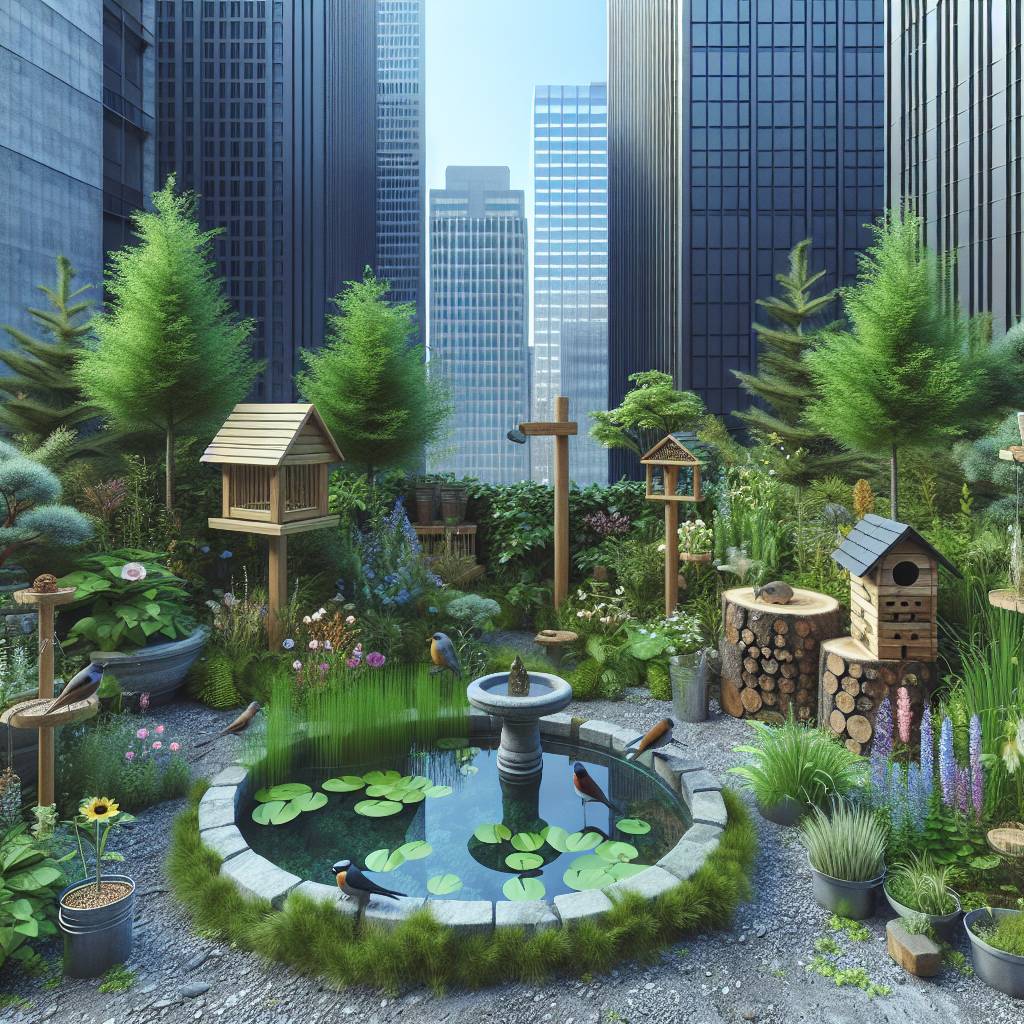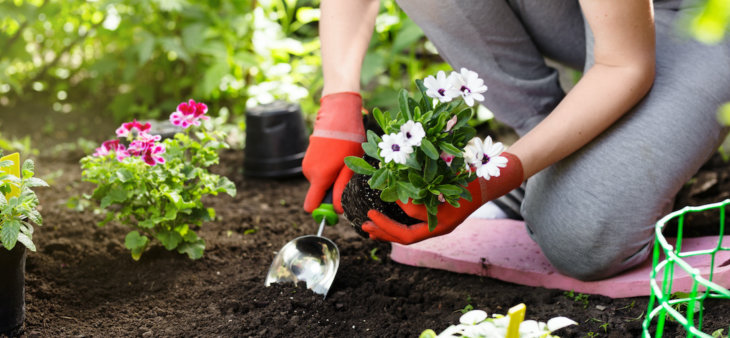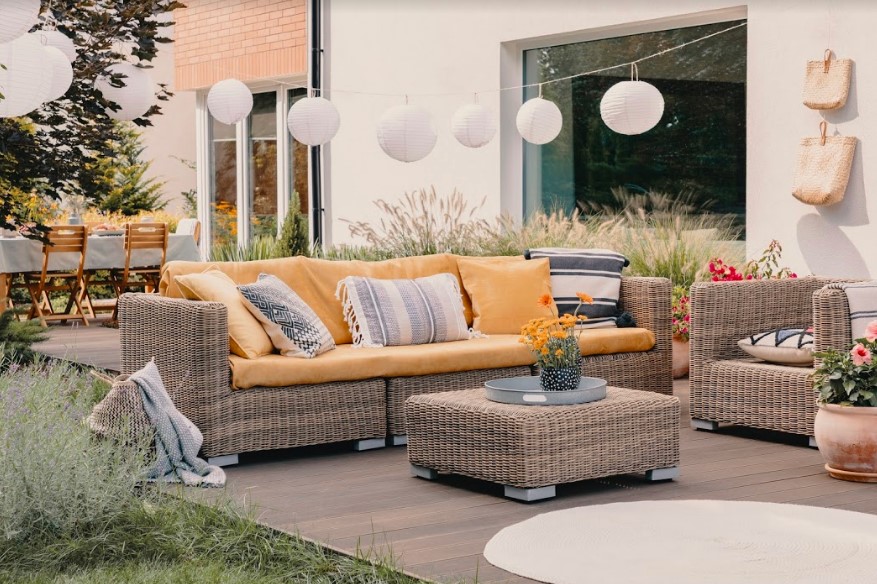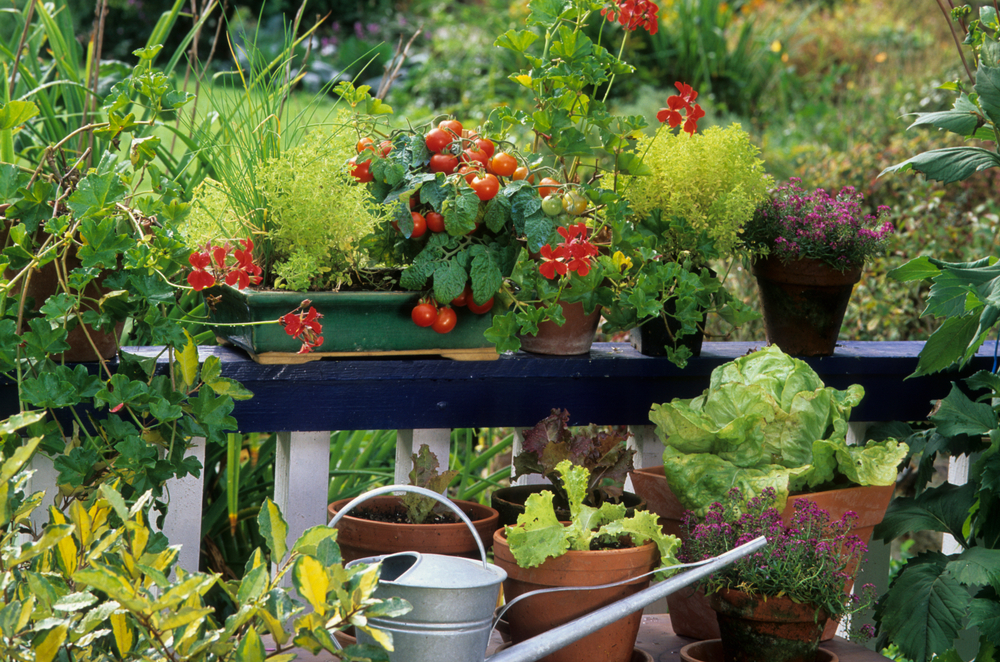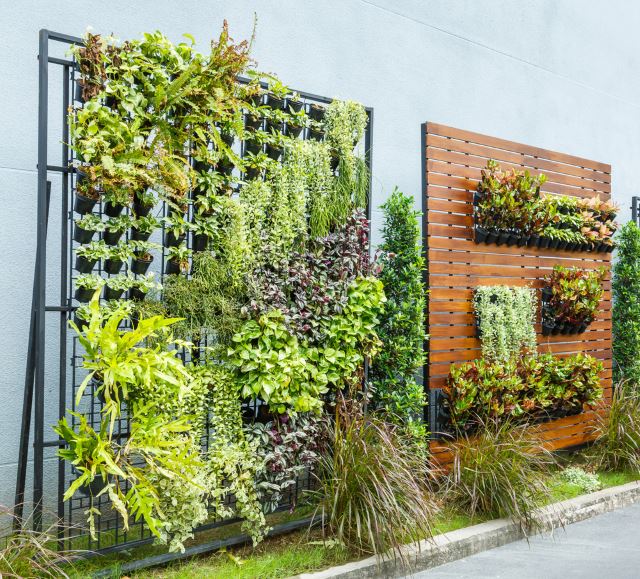In the concrete jungle, creating a thriving wildlife habitat in a small urban garden is not only possible but also essential. By incorporating specific features and plantings, you can transform your limited outdoor space into an inviting haven for various creatures. Small urban garden wildlife attractors like honeysuckle play a crucial role in preserving biodiversity and fostering ecological balance within densely populated areas.
Embracing the concept of harmonious coexistence with nature, this blog post delves into practical strategies to attract wildlife to your compact urban oasis and small garden, providing accommodation and ground space for them, with the help of honeysuckle. From native plant selections that provide food and shelter to simple water features that beckon birds and insects, we explore diverse methods for nurturing a biodiverse ecosystem right outside your door.
Key Takeaways
- Plant a variety of native flowers: Choose native flowers that provide nectar and pollen for urban wildlife, such as bee balm, coneflowers, and black-eyed Susans.
- Incorporate diverse trees and shrubs: Grow a mix of trees and shrubs like oak, hickory, and serviceberry to offer food, shelter, and nesting sites for birds and small mammals.
- Create a water feature: Adding a small pond, birdbath, or even a shallow dish of water can attract birds, butterflies, and other wildlife to your urban garden.
- Utilize dead wood and brush piles: Leave some dead wood and create brush piles to provide habitat for insects, amphibians, and small mammals.
- Practice sustainable gardening: Implement eco-friendly practices like composting, using organic fertilizers, and minimizing pesticide use to support a healthy urban ecosystem.
- Support pollinators: Establish a pollinator garden with native plants to attract bees, butterflies, and other pollinating insects, contributing to urban biodiversity.
Fundamentals of Attracting Wildlife in Urban Gardens
Diverse Vegetation
To attract a variety of garden wildlife, it’s essential to provide diverse vegetation. This includes planting different types of flowers, shrubs, and trees. By doing so, you create a welcoming environment for various wild species. For instance, colorful flowers like sunflowers and zinnias can attract butterflies and bees, while berry-producing bushes may entice birds such as robins and finches.
In addition to flowering plants, consider incorporating wild plants that produce seeds or nuts. These can be an excellent food source for small mammals like squirrels and chipmunks. By offering a range of plant life within your garden space, including Best Plants for Small Urban Gardens, you’re more likely to support a broader spectrum of wildlife.
Sheltered Areas
Creating sheltered areas with dense foliage is crucial for attracting small animals to your small urban garden. Dense foliage provides cover from predators and harsh weather conditions. It also offers nesting spots for birds and safe hiding places for other creatures.
For example, planting thick shrubs or installing birdhouses can offer protection and nesting opportunities for birds such as sparrows or wrens. Similarly, creating brush piles using fallen branches can provide shelter for insects like ladybugs or ground beetles.
Native Plants
Incorporating native plants into your garden is vital in supporting local wildlife populations. Native plants are adapted to the local climate and soil conditions; thus they require less maintenance compared to non-native species. They also serve as natural sources of food and shelter for indigenous wildlife.
For instance, if you live in an area where milkweed is native, planting this flower can help support monarch butterfly populations by providing essential nectar sources during their migration journey through your region.
Choosing the Right Flowers for Wildlife Attraction
Nectar-Rich Flowers
Nectar-rich flowers are essential for attracting pollinators like bees and butterflies. These tiny creatures play a crucial role in maintaining the ecosystem by aiding in plant reproduction. By planting flowers such as lavender, sunflowers, and coneflowers, you can entice these helpful insects to visit your garden regularly. The sweet nectar produced by these flowers serves as a vital food source for pollinators, ensuring their continued presence in your small urban garden.
It’s important to remember that without pollinators, many plants would not be able to produce fruits or seeds. This means that having nectar-rich flowers not only benefits the wildlife but also contributes to the overall health of your garden.
Brightly Colored Flowers
When choosing flowers for your small urban garden, opt for brightly colored ones to catch the attention of birds and insects. Vibrant hues such as red, orange, yellow, and purple are known to attract various wildlife species due to their visibility from afar. For instance, hummingbirds are drawn to bright red tubular blooms like those found on cardinal flowers or bee balm.
By incorporating an array of colorful blossoms into your garden design, you create an inviting environment that appeals to different types of wildlife. This diversity enhances the visual appeal while simultaneously increasing the chances of attracting a wide range of animals.
Different Blooming Periods
Selecting flowers with different blooming periods is crucial for providing a continuous food source throughout the year. By including early spring bloomers like crocuses and snowdrops along with late summer options such as sedum and goldenrod, you ensure that there’s always something available for visiting wildlife.
This strategy is particularly beneficial when aiming to support migrating birds or overwintering insects since it guarantees sustenance during critical times when natural resources may be scarce.
Growing Trees and Shrubs to Attract Urban Wildlife
Planting Fruit-Bearing Trees and Shrubs
Planting fruit-bearing trees and shrubs is an excellent way to attract birds and mammals to your small urban garden. These plants provide a natural food source for wildlife, encouraging them to visit and even make their homes in your garden. Consider including native species such as serviceberry, elderberry, or cherry trees, which are not only attractive but also provide sustenance for various creatures.
Incorporating honeysuckle shrubs can be beneficial as they produce berries that are favored by many bird species. By offering a variety of fruit-producing plants, you can cater to the diverse dietary needs of different wildlife species in your area.
Creating Vertical Diversity
When planning your garden, it’s crucial to consider the vertical aspect of plant life and the Best Plants for Small Urban Gardens. Including evergreen trees alongside deciduous ones provides year-round shelter for urban wildlife. Evergreens offer continuous cover from predators and harsh weather conditions while also serving as nesting sites for birds.
Moreover, planting trees of varying heights contributes to creating a diverse habitat within your garden. Taller trees provide shelter from above while smaller ones offer protection closer to the ground level. This vertical diversity encourages more wild animals like squirrels and chipmunks to frequent your garden due to the availability of suitable habitats at different heights.
Creating a Mini Wildflower Meadow
Embracing Native Wildflowers
Creating a small urban garden wildlife attractor can be as simple as allowing a portion of your garden to flourish with native wildflowers. These flowers not only add natural beauty to your space but also serve as an essential food source for various insects and birds. By embracing native wildflowers, you provide a sustainable environment for local wildlife while enhancing the aesthetic appeal of your garden.
Native wildflowers such as Black-eyed Susans, Purple Coneflowers, and Coreopsis are perfect choices for attracting pollinators like bees and butterflies. These vibrant blooms not only add color to your garden but also support the life cycle of many beneficial insects. By incorporating these small space-friendly plants into your urban oasis, you create an inviting habitat that encourages biodiversity right at home.
Natural Maintenance Practices
To ensure the health and vitality of your mini meadow, it’s crucial to avoid using herbicides or pesticides in this area. These chemicals can harm the very creatures you’re trying to attract, disrupting the delicate balance of nature within your small garden ecosystem. Instead, opt for natural maintenance practices such as hand weeding or mulching to keep unwanted plants at bay without harming beneficial insects or other wildlife visitors.
It’s also important to regularly mow or trim the meadow throughout spring and summer months. This practice helps prevent any single species from dominating the area while promoting continuous growth and blooming among different plant varieties. By maintaining this balanced approach in caring for your mini wildflower meadow, you create an ever-changing landscape that offers sustenance and shelter for various urban wildlife species throughout the year.
Adding Water Sources for Urban Wildlife
Bird Bath or Shallow Water Feature
Adding a water source is essential. Installing a bird bath or shallow water feature provides water for drinking and bathing. This attracts various species of birds, including robins, sparrows, and finches. They will visit your garden to quench their thirst and freshen up.
The sound of trickling water can be soothing for humans while also attracting more wildlife. It’s like creating an oasis in the middle of the city where both people and animals can find respite.
Small Pond or Container Water Garden
Another way to enhance your small urban garden as a wildlife habitat is by considering a small pond or container water garden. These provide not only drinking spots but also habitats for aquatic species such as frogs, newts, and dragonflies. The presence of these creatures enriches the biodiversity in your garden.
By incorporating different levels within the pond or container (using rocks or logs), you create spaces that cater to diverse species’ needs—shallow areas for small mammals to drink from and deeper sections for aquatic life to thrive.
Providing Rocks or Logs
In addition to installing water features, providing rocks or logs near the water source offers landing spots for insects like butterflies, bees, and dragonflies. These insects play vital roles in pollination while serving as food sources for other wildlife such as birds and amphibians.
The rocks also serve as sunbathing spots for reptiles like lizards who bask in sunlight after taking a dip in the water—a spectacle that can bring delight to anyone observing from afar.
To sum up this section on creating small urban garden wildlife attractors, adding these elements not only benefits local fauna but also brings joy and tranquility into our lives by connecting us with nature right at our doorstep.
Building Habitats with Dead Wood and Brush Piles
Natural Habitats
Leaving fallen wood in your small urban garden creates natural habitats for wildlife. Small animals like insects, reptiles, and amphibians find shelter and nesting spaces in decaying wood. These creatures are essential for maintaining a balanced ecosystem.
Brush piles made from pruned branches also offer excellent shelter for small animals. The dense structure of the pile provides hiding places where birds and mammals can feel safe from predators. This encourages them to visit your garden regularly, adding vitality to the space.
Decomposing Wood Benefits
Decomposing wood acts as a valuable food source for various organisms in your garden. Insects such as beetles, ants, and termites thrive on decaying wood, which then attracts birds that feed on these insects. Fungi grow on dead wood, providing nourishment for other wildlife like snails or slugs.
Implementing Sustainable Gardening Practices
Sustainable Gardening Practices
Implementing sustainable gardening practices is crucial. By using organic fertilizers and compost, you can nourish your garden without harming wildlife. These natural alternatives provide essential nutrients for plants while promoting a healthy environment for insects, birds, and other small creatures.
Furthermore, practicing water conservation techniques is vital in a small urban garden. Collecting rainwater not only helps reduce water usage but also provides a natural and chemical-free source of hydration for the plants and wildlife in your garden. This approach supports the overall sustainability of the ecosystem within your limited space.
To minimize pesticide use, it’s important to encourage natural pest control methods. Instead of relying on harmful insecticides that can negatively impact the local wildlife population, consider introducing beneficial insects like ladybugs or creating habitats for pest-eating birds such as bluebirds or robins. These measures promote a balanced ecosystem where pests are kept in check naturally without disrupting the harmony of your small urban garden.
In addition to these steps, incorporating green practices into every aspect of gardening is essential for attracting wildlife to small urban spaces. By avoiding synthetic chemicals and artificial additives commonly found in traditional gardening products, you create an inviting environment that supports diverse flora and fauna.
Pros & Cons
Pros:
- Organic fertilizers and compost nourish the garden without harming wildlife.
- Water conservation techniques like rainwater collection support sustainability.
- Natural pest control methods maintain a balanced ecosystem without disrupting harmony.
Cons:
- Requires more effort compared to conventional gardening practices.
- May take time to see results as natural processes unfold gradually.
Providing Food and Shelter for Urban Critters
Attracting Feathered Visitors
Hang bird feeders filled with seeds or suet to entice a variety of birds to your small urban garden. By providing a steady supply of food, you can create an inviting space for feathered creatures all year round. Different types of seeds can attract different bird species, adding diversity to your wildlife community.
Creating a welcoming environment for birds not only adds life and movement to your garden but also contributes to the overall ecosystem. It’s like having your own little avian sanctuary right in your backyard!
Offering Accommodation
Install nesting boxes for birds and bats in strategic locations around your garden area. These homes provide shelter and breeding sites, encouraging these creatures to take up residence in the heart of the city.
By offering suitable accommodations, you’re essentially creating safe havens where urban critters can thrive despite limited natural spaces. This is especially important as many traditional habitats are lost due to urbanization.
Providing Hiding Places
Create rock piles or log piles as hiding places for reptiles and amphibians seeking refuge from predators or extreme weather conditions. These hiding spots offer essential protection while blending seamlessly into the natural landscape of your small urban garden.
These shelters mimic natural environments that might be missing in an urban setting, giving these fascinating creatures a chance at survival even within city limits.
Importance of Urban Pollinator Gardens
Role of Urban Gardens
Urban gardens are essential for attracting and supporting wildlife in small urban spaces. These green pockets provide crucial habitats and food sources for various creatures, including pollinators like bees, butterflies, and birds. As cities expand, natural habitats diminish, making urban gardens vital for maintaining biodiversity.
Creating a small urban garden with the right plants can significantly contribute to the health of local ecosystems by attracting pollinators. By doing so, you play a part in ensuring the success of plant populations within your community.
Plant Selection
Opt for native species that are well-suited to your region’s climate and soil conditions. Native flowers such as coneflowers, black-eyed Susans, and milkweed are excellent choices as they provide nectar and pollen for bees and butterflies throughout the growing season.
In addition to flowers, consider incorporating shrubs like serviceberry or elderberry that produce berries favored by birds. These plants not only attract wildlife but also create an attractive visual landscape within your limited space.
Design Considerations
The layout of your small urban garden plays a crucial role in attracting wildlife. Grouping together clusters of flowers rather than scattering them around helps pollinators locate food more easily. Leaving some areas of bare soil or using mulch provides nesting sites for ground-nesting bees.
Integrating features such as bird baths or shallow dishes filled with water can also entice birds into your garden while providing them with much-needed hydration during hot weather spells.
Final Remarks
You’ve now got the lowdown on creating a wildlife haven in your small urban garden. By planting the right flowers, trees, and shrubs, setting up water sources, and providing food and shelter, you can turn your garden into a bustling ecosystem. Don’t forget to implement sustainable gardening practices to keep the balance and harmony in your mini wildlife sanctuary.
So, what are you waiting for? Get your hands dirty, start planting, and watch as your urban garden transforms into a buzzing hub of wildlife activity. It’s time to unleash your inner wildlife gardener and make a positive impact on the environment right in your own backyard!
Frequently Asked Questions
FAQ
How can I attract wildlife to my small urban garden?
To attract wildlife to your small urban garden, you can plant a variety of native flowers, trees, and shrubs that provide food and shelter. Creating water sources like birdbaths or mini ponds can also help in attracting urban wildlife.
What are sustainable gardening practices for urban wildlife attraction?
Sustainable gardening practices for attracting urban wildlife include using organic fertilizers, minimizing pesticide use, and conserving water through techniques like mulching. By adopting these practices, you can create a healthy environment for various critters while minimizing negative impacts on the ecosystem.
Which types of flowers are best for attracting wildlife to an urban garden?
Native wildflowers such as coneflowers, bee balm, and black-eyed Susans are excellent choices for attracting butterflies, bees, and other pollinators to your small urban garden. These flowers provide nectar and pollen essential for the survival of many beneficial insects.
How do dead wood and brush piles contribute to creating habitats in an urban garden?
Dead wood and brush piles serve as valuable habitat elements by providing cover and nesting sites for various creatures such as insects, amphibians, reptiles, birds, and mammals. They mimic natural environments where animals seek refuge from predators or harsh weather conditions.
Why is it important to create a mini wildflower meadow in an urban setting?
Creating a mini wildflower meadow in an urban area not only adds beauty but also provides essential food sources for pollinators like bees and butterflies. It contributes to biodiversity conservation while enhancing the overall ecological balance within the local ecosystem.
